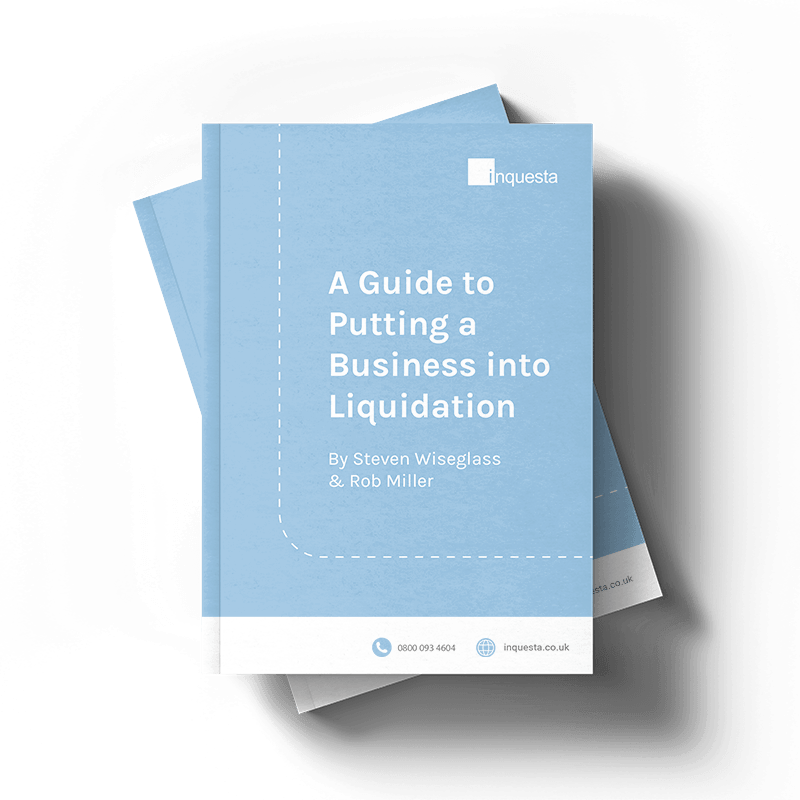
COMPULSORY LIQUIDATION SUPPORT
Facing compulsory liquidation can be incredibly overwhelming, but with the right guidance, you can navigate the process with confidence. At Inquesta, we specialise in providing expert support to help company directors manage creditor demands, meet legal requirements, and explore every available option to protect your interests. Our expert team is here to ensure you receive the best possible outcome during this challenging period.
What is Compulsory Liquidation?
So, what is compulsory liquidation? Compulsory liquidation refers to the formal insolvency procedure when a company is insolvent and, therefore, unable to pay its debts. Typically triggered by a creditor through a court ordered winding up order, the compulsory liquidation process forces the business in question to cease operations immediately while a court-appointed liquidator is tasked with taking control and selling off assets in order to repay creditors.
This process is non-voluntary, meaning that directors and shareholders are left with little to no control once the petition is granted. The liquidator will investigate the company’s affairs in order to determine if any misconduct contributed to the insolvency in any way. Directors may face consequences, such as disqualification or personal liability, should the investigation find anything untoward.
Compulsory liquidation marks the final stage for an insolvent business, ultimately resulting in its dissolution. Any assets left over after creditor repayment will be distributed to shareholders. However, in most cases, the company’s debts will outweigh its assets. The seriousness of this outcome highlights the pressing need and importance of seeking out expert assistance as soon as possible, in order to properly explore all available debt recovery options.
Compulsory Liquidation vs Voluntary Liquidation
Liquidation can be a key stage in a company’s life cycle. Its assets are sold off to pay debts and the business will dissolve as an entity. This takes place in two ways: compulsory liquidation and voluntary liquidation.
Despite ultimately sharing the same end-goal of winding up a company, their approaches, implications, and processes differ significantly.Compulsory liquidation is instigated by external entities, primarily creditors, who feel that the company is insolvent and unable to meet its debt obligations. In the UK, the compulsory liquidation process is governed by strict legal procedures aimed at ensuring creditors are repaid.
On the other hand, voluntary liquidation, such as Creditors Voluntary Liquidation (CVL) and Members Voluntary Liquidation (MVL), is a form of liquidation initiated by the company itself. Directors or shareholders can decide to wind up the business for various reasons, such as unprofitability, retirement, and strategic decision making. The purpose of voluntary liquidation is generally to provide a controlled method of settling debts and closing the business.
Understanding the difference between compulsory liquidation vs voluntary liquidation is critical for owners, investors, and stakeholders alike, as the financial, legal, and reputational implications can differ significantly.
Compulsory Liquidation: Directors’ Consequences
The legal and financial implications of compulsory liquidation in the UK can be severe for companies, employees, and even directors. Once a firm enters into the compulsory liquidation process, the appointed liquidator will oversee a thorough investigation of the conduct of the directors during the period leading up to the company’s insolvency issues.
If any mismanagement, misconduct, negligence, or wrongful trading is picked up at this stage, responsible parties could be held personally liable for either some or all of the businesses debts.
These consequences can come by way of disqualification from holding the role in the future for a prolonged period, significant financial penalties, or even criminal prosecution, should the case be severe enough. Directors suspected of contributing directly and unlawfully to their company’s debt issues may also face restrictions on setting up or managing a new business.
The most effective way to ensure security during compulsory liquidation is to seek professional advice as soon as possible. Gaining an understanding of their obligations will empower a director to take the necessary steps to mitigate personal risk.
Download our FREE Guide to Liquidation
If your business has received a winding-up petition, understanding the liquidation process is vital. If you aren’t able to get your winding up petition dismissed, or addressed in another way, it can easily lead to compulsory liquidation if not addressed quickly, making it essential to explore your options and take well-informed action.
Our FREE Liquidation guide provides clear, expert advice on:
- Key warning signs that your business may be in danger of possible liquidation.
- Which insolvency options are available and which ones best suit your situation.
- What the liquidation process looks like
- Things you should be aware of throughout the process.
- What life after liquidation looks like.
If you’re considering liquidation or seeking more information, download our comprehensive Liquidation Guide and explore everything you will need to know.

The Compulsory Liquidation Process
From the initial winding up petition to the appointment of a liquidator, shutting down of operations, sale of assets to facilitate repayment, and more — the compulsory liquidation process involves several steps, all of which are necessary to ensure that the company is properly shut down and creditors are paid back the money they are owed.
The compulsory liquidation process can typically take anything from six months up to a year. The main steps include:
Inquesta: Trusted Guidance Through a Compulsory Liquidation
Facing compulsory liquidation is a highly challenging and often overwhelming experience. At Inquesta, we are on hand to provide the expertise and personalised support needed to navigate the process with confidence.
Our expert team of licensed insolvency practitioners bring a wealth of experience handling compulsory liquidation cases, ensuring that everything is managed efficiently and in compliance with all UK laws.
Our team works closely with directors and creditors alike to provide clear, practical advice and ensure full transparency at all times. We take a proactive approach, offering tailored solutions to ensure the situation is resolved with professionalism and minimal stress.
Get In Touch
Meet the Director
At Inquesta we offer a director-led service. Our dedicated, expert team is ideally positioned to support you through the highly stressful compulsory liquidation process.

Steven Wiseglass
Director of Insolvency
A co-founder of Inquesta, Steven is a licensed Insolvency Practitioner with over a decade of experience in the field. He is a member of the Insolvency Practitioners Association, Association of Business Recovery Professionals (R3), and his insolvency licence is issued by the Insolvency Practitioners Association. In addition, he sits on the R3 committee of the North West Regional Committee.
Steven specialises in advising directors of small to medium-sized businesses, and has a wealth of expertise in providing the most appropriate advice whatever the firm’s circumstances may be. He has also been instrumental in helping company directors save their business and rebuild them into successful enterprises.



